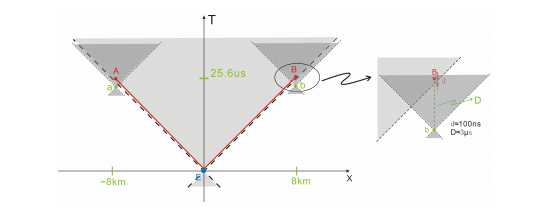Chinese Physicists Measure Speed of “Spooky Action At a Distance”

One of the strangest concepts in quantum mechanics is the notion of entanglement. This is the idea that two quantum particles can be so deeply linked that they share the same existence. When that happens, a measurement on one immediately influences the other, regardless of the distance between them.
This “spooky action at a distance”, as Einstein called it, has puzzled and fascinated physicists since it was first discussed in the 1930s. Einstein initially used it as evidence of the failure of quantum mechanics since this instantaneous action clearly seemed to violate relativity.
Later, physicists realised there was no conflict because the “spooky action” cannot be used to send information faster than the speed of light. However, important questions remain about the nature of entanglement and spooky action. “If the spooky action does exist, what is its speed?” ask Juan Yin and pals at the University of Science and Technology of China in Shanghai.
Today, they reveal the answer. They say spooky action travels at least four orders of magnitude faster than light.
Measuring the speed of spooky action is no trivial task. The method is to create a pair of entangled particle photons and separate them by a significant distance, in this case 15 km or so. The experiment involves performing a measurement on one photon and then timing how long it takes for the other photon to be influenced.
Of course, this is tricky to do with a single pair of photons because of the tiny periods of time involved and the rotation of the Earth which moves the experiment by distances that are significant over these time scales.
So the trick is to create a stream of entangled photons and to measure the spooky action continuously for 12 hours or more. If the experiment is aligned in an East-West direction, the contribution from the Earth’s rotation should drop out over that time.
Juan and co have perfected this technique by sending photons through the atmosphere from a fish farm near Qinghai Lake in the Tibetan Plateau. (We looked at their work last year when the same team smashed the distance record for teleporting photons using similar gear.)
They say the results are clear but do not measure the speed of spooky action directly. Instead, the results place a lower bound on how fast it must be. The answer is that it is at least four orders of magnitude faster than light, and may still turn out to be instantaneous, as quantum mechanics predicts.
If this result sounds familiar, it’s because a European team based at the University of Geneva in Switzerland carried out a similar experiment in 2008 getting a similar result. However, this turned out to contain a loophole which allowed the results to be explained without entanglement. “All previous experiments along this direction have locality loopholes and thus can be explained without having to invoke any `spooky action’ at all,” say Juan and co.
Now the Chinese team claim to have closed this loophole and say theirs is the first legitimate measurement of the speed of spooky action. It’ll be interesting to see whether they can raise this bound in future and find out how fast they can go.
Ref: arxiv.org/abs/1303.0614: Bounding The Speed Of `Spooky Action At A Distance’
Keep Reading
Most Popular
Large language models can do jaw-dropping things. But nobody knows exactly why.
And that's a problem. Figuring it out is one of the biggest scientific puzzles of our time and a crucial step towards controlling more powerful future models.
How scientists traced a mysterious covid case back to six toilets
When wastewater surveillance turns into a hunt for a single infected individual, the ethics get tricky.
The problem with plug-in hybrids? Their drivers.
Plug-in hybrids are often sold as a transition to EVs, but new data from Europe shows we’re still underestimating the emissions they produce.
Stay connected
Get the latest updates from
MIT Technology Review
Discover special offers, top stories, upcoming events, and more.